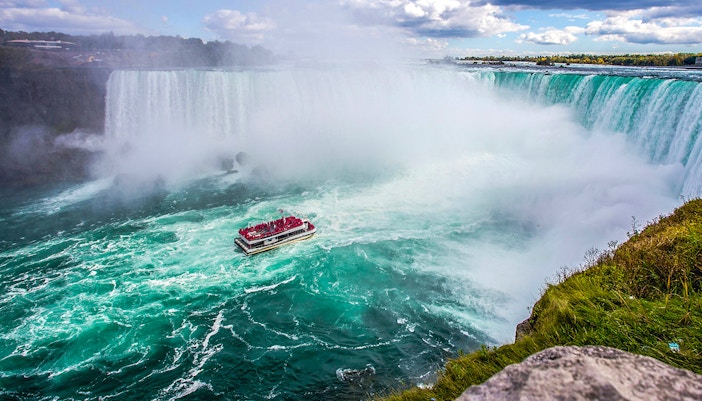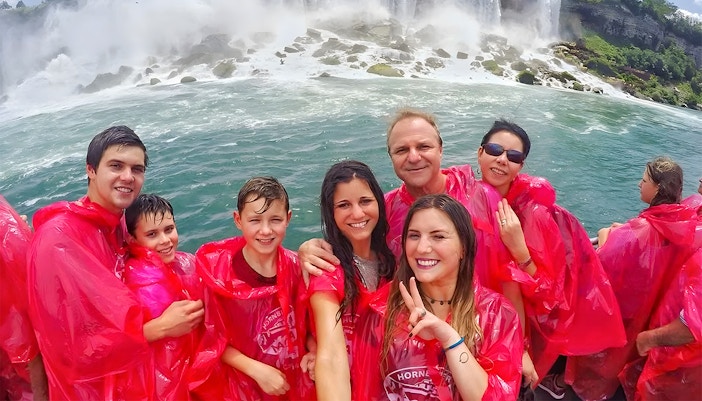
The History of Niagara Falls: From Indigenous roots to a tourist haven
From Glaciers to waterfalls: The formation of Niagara Falls
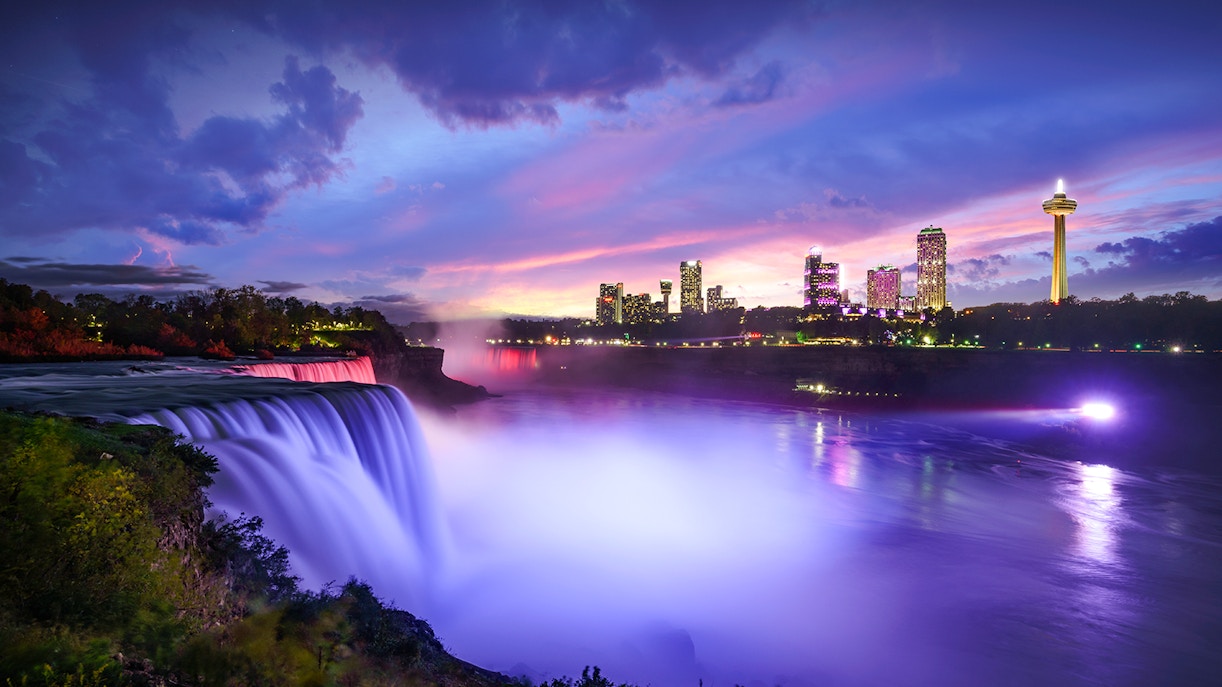
If we have one natural formation to thank for the grandeur of Niagara Falls, it is the Wisconsin Glaciation. At the end of the last Ice Age, its glaciers began to recede, carving out the basins that would become the Great Lakes. Water melted from the glaciers, flowed into these newly formed lakes, and began to drain from Lake Erie to Lake Ontario, creating the Niagara River.
The flow of water started to erode the steep slope of the Niagara Escarpment, creating a waterfall at Queenston-Lewiston. However, the bedrock's erosion caused by the Niagara River's powerful flow gradually receded Niagara Falls to its current location.
Read more about Niagara FallsImportant events throughout the years

19th Century
- 1842: English novelist Charles Dickens visits Niagara Falls during a North American tour with his wife.
- 1846: The first Maid of the Mist steamboat begins ferrying passengers near the falls.
- 1848: An ice jam causes the Niagara River to stop flowing temporarily, resulting in an eerie silence that replaces the thundering of the Falls.
- 1859: Charles Blondin, a French tightrope walker, crosses the Niagara Gorge on a tightrope.

20th Century
- 1901: School teacher Annie Edson Taylor becomes the first person to survive going over Niagara Falls in a barrel.
- 1953: 26-year-old Marilyn Monroe stars in the film Niagara, boosting Niagara Falls’ popularity as a film location.
- 1960: Roger Woodward survives a plunge over Niagara Falls after a boating accident.
- 1974: The film The Great Niagara, about an old man’s obsession with conquering the Niagara River and Niagara Falls, is released.
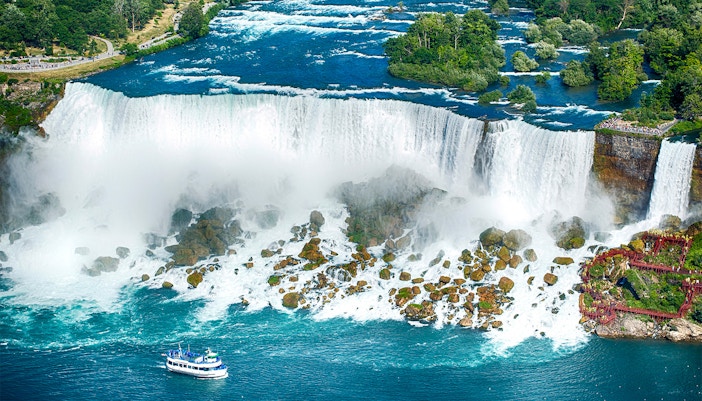
21st Century
- 2003: Kirk Raymond Jones survives an unprotected plunge over Horseshoe Falls. But he died when he tried to go over Niagara Falls again with a plastic ball in 2017.
- 2012: Nik Wallenda becomes the first person to walk a tightrope stretched directly over Niagara Falls.
- 2017: Renowned trapeze and aerial artist Erendira Wallenda hangs by her teeth from a helicopter over Niagara Falls.
The Indigenous history of Niagara Falls
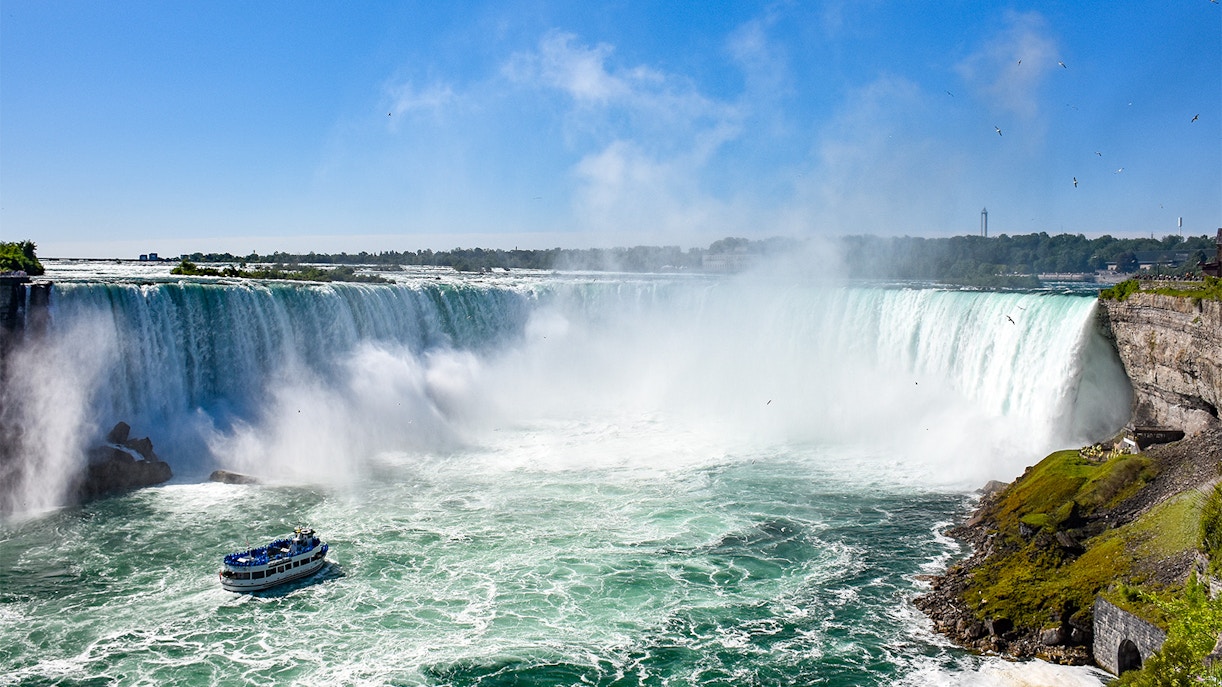
Niagara Falls’ history is deeply intertwined with the cultural heritage of the Haudenosaunee Confederacy. For these Indigenous peoples, the Falls hold profound spiritual significance. The name "Niagara" is believed to have originated from the Iroquoian word "Onguiaahra," meaning "the strait".
The Falls served as a ceremonial and meeting place for Indigenous nations and was considered neutral ground, where disputes could be peacefully resolved and alliances forged.
Various legends and stories among the Indigenous groups are associated with Niagara Falls, including the one about Lelawala, for whom the Maid of the Mist boat tour was named. These tales often include themes of natural forces, spiritual beings, and lessons about respect for nature.
Learn more interesting facts about Niagara FallsHow the Falls became a hydroelectric powerhouse
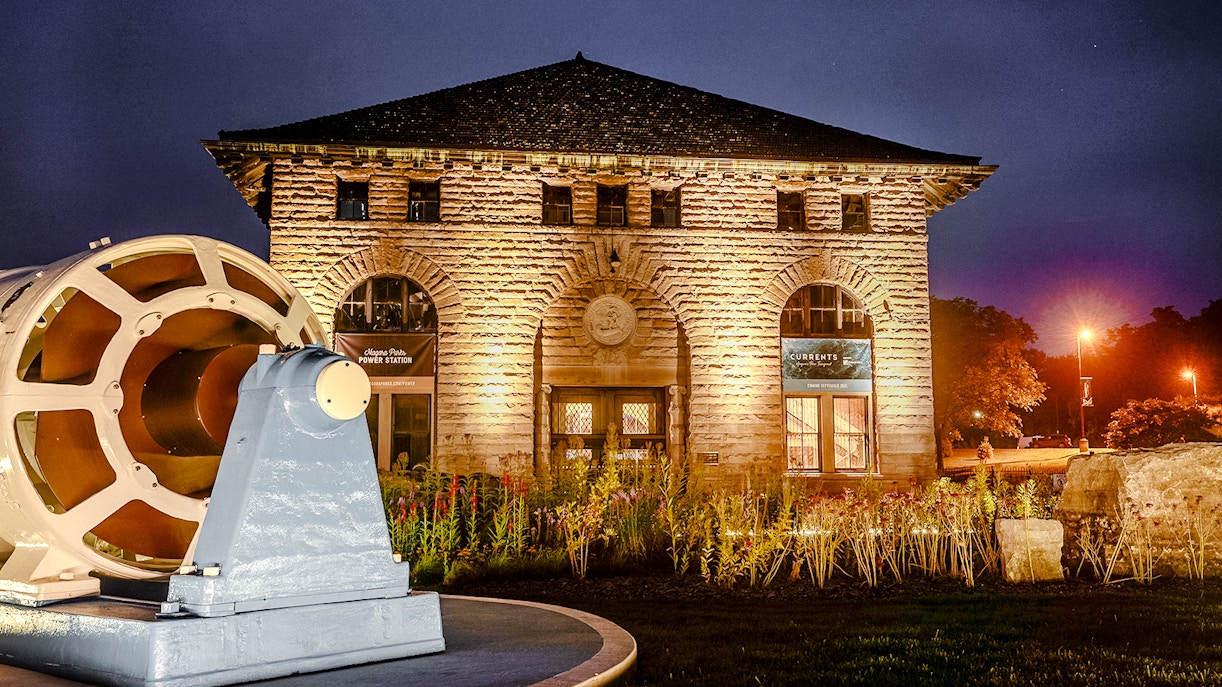
With the industrialization that occurred in the early 19th century, the development of amusements, hotels, large mills, and factories along the Niagara River followed.
At the end of the century, preservationists and locals led by artist Frederic E. Church and landscape architect Frederick Law Olmsted tried to stop the Niagara River's abuse in the name of development. This led to the formation of the first State Park in the United States.
In the 1890s, with Nikola Tesla at the helm, multiple power plants were constructed to harness the Niagara River's electricity. At one point in the mid-1900s, the Niagara Power Project was the largest hydropower facility in the Western world.
Today, you can visit the Niagara Parks Power Station to see the extent of Niagara’s importance as a power generator in the region.
Visit the Niagara Parks Power StationNiagara Falls today
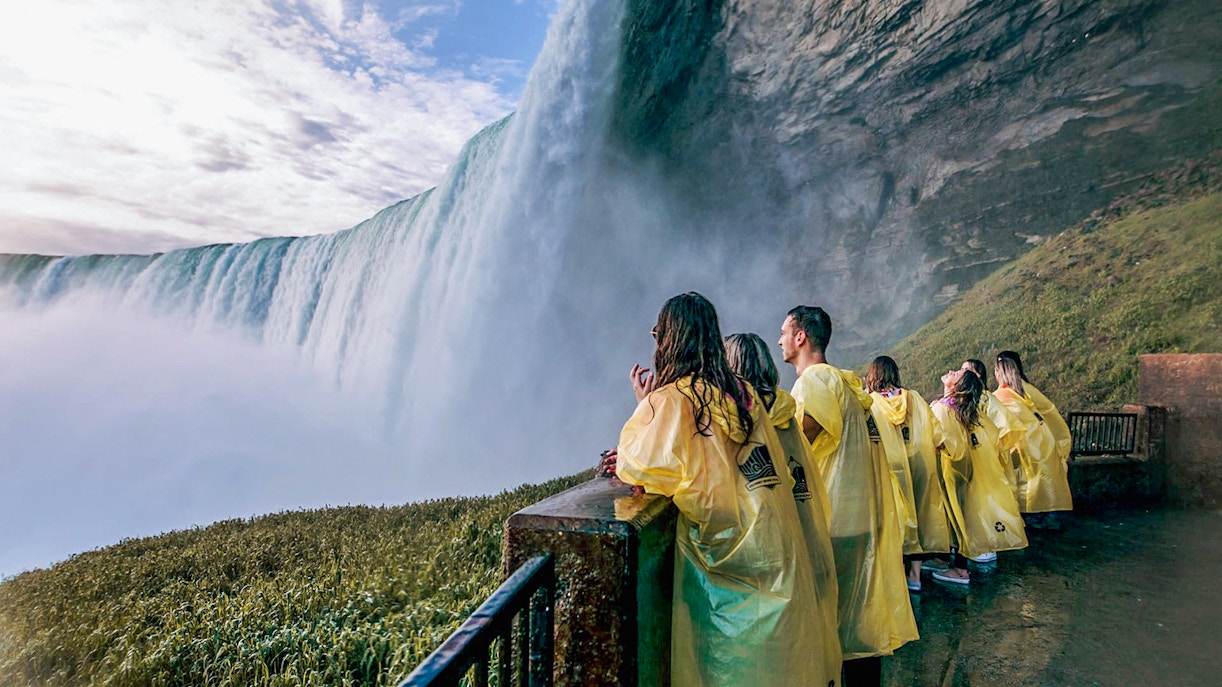
The boom in tourism at Niagara Falls during the 19th century placed the spotlight on efforts to preserve the natural environment while accommodating tourism in the region.
Iconic attractions at Niagara Falls include the Maid of the Mist boat tour, which has been operating since 1846, Cave of the Winds, Journey Behind the Falls, and the Hornblower Niagara Cruises. All of these allow visitors to get up close to the Falls without threatening the area's ecology.
Read about Niagara Falls attractions
Book your Niagara Falls tickets
Frequently asked questions about Niagara Falls’ history
Niagara Falls were formed around 12,000 years ago, at the end of the last ice age. Retreating glaciers created the Great Lakes and carved a path through the Niagara Escarpment. Water from the lakes flowed through this path, creating the powerful waterfalls we see today.
The first people at Niagara Falls were the Indigenous peoples of the region, including the Neutral, Erie, and Iroquois tribes, who considered the falls a sacred place.
Annie Edson Taylor was the first person to go over Niagara Falls in a barrel and survive. At the age of 63, she completed this daring stunt on October 24, 1901.
Several daredevils have attempted stunts at Niagara Falls, including Charles Blondin, who crossed the falls on a tightrope in 1859, and Nik Wallenda, who did the same in 2012.
Several Indigenous legends and folklore are associated with Niagara Falls. One is about the Maid of the Mist, a woman who sacrificed herself to the falls to appease the thunder god Heno.
Yes! Niagara Falls has been featured in numerous movies, including the 1953 film Niagara starring Marilyn Monroe.
The first hydroelectric power plants at Niagara Falls were built in the 1890s, marking the beginning of harnessing the falls for electricity.
The Battle of Lundy's Lane, also known as the Battle of Niagara, was a significant battle site during the War of 1812, which took place along the Niagara River between United States and British forces.
